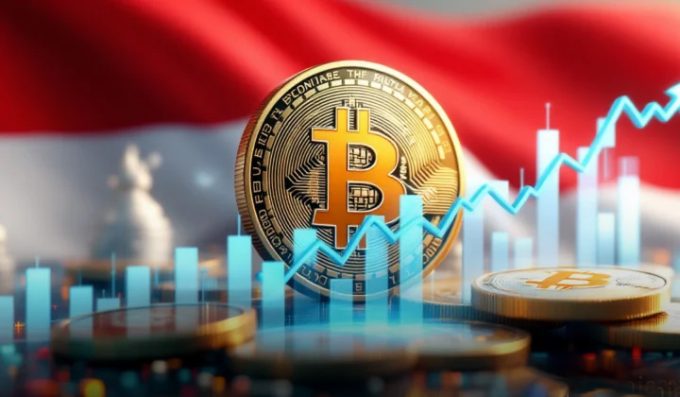NFTs Impacting Environment
By Ruchi Sharma
Non-fungible token is Blockchain-based tokenization. Ethereum or other comparable blockchains are used to build NFTs. NFTs can contribute to greenhouse gas emissions and climate change through their generation, trading, and storage because blockchains require electricity.
These transactions can use a lot of energy, depending on how the blockchain that houses these NFTs and ordinals is programmed and designed.
When an NFT is created, purchased, sold, and stored, energy is used. A look at each of these NFT lifecycle stages is provided below:
NFT is minted: NFT creators upload their art on the blockchain that tokenizes and saves NFT’s data. In order to access a wallet its private keys are generated which could be private or public keys, this is known as tokenization. Through this process, the NFT is created.
NFT is listed: The NFT creator can post their creation for viewing on an NFT marketplace at a fixed price or through an auction once it has been minted on a blockchain.
NFT is sold/purchased: An initial blockchain transaction is made when the NFT is bought. The blockchain network gets to work approving the transaction and giving the new owner possession of the NFT.
Storage: The asset is kept off-chain, for example on the interplanetary file system (IPFS), as a file, image, or other type of data.
Non-Transactional Energy Use
In the event that there is no transaction activity, NFTs still need to be stored. Typically, these tokenized assets include digital files like documents, photos, and movies that need to be stored in digital space.
The tokens, which are alphanumeric sequences derived from hashed data, are the sole assets stored on blockchains since the blockchains themselves are not designed to store these assets.
The resources are kept in other locations, as on the interplanetary file system (IPFS). In order to provide distributed and decentralized storage for platforms such as blockchains, the IPFS was developed.
Energy is needed for data storage. Both the total energy used by NFTs and their storage capacity are projected to rise as their number increases.
Electronic Waste
Apart from energy usage, there is also a problem with electronic garbage, or e-waste. When a blockchain, like Bitcoin, depends on mining, hardware is always being updated and enhanced.
In order to tackle more complex cryptographic challenges, mining often makes use of technology such as central processing units (CPUs), graphics processing units (GPUs), and application-specific integrated circuits (ASICs).
This gear ages quickly because it is used at 100% capacity for 24 hours a day, which damages electrical circuits. Bulk e-waste is produced during equipment replacement and updates. Unrecycled hardware ends up in landfills where it releases poisons into the atmosphere.
Why Is the Energy Usage of an NFT So High?
Because they need to be verified as transactions by a blockchain network, non-fungible tokens consume energy. More energy is needed for more transactions.
Do NFTs Cause Environmental Damage?
Energy and hardware consumption are required for the creation, sale, and purchase of an NFT, which might result in pollution or e-waste that would not be required if they did not exist.
What Does NFT’s Carbon Footprint Mean?
While the exact cost of one NFT in terms of carbon creation is difficult to estimate, it is safe to assume that they increase the overall amount of carbon produced by human activity.
Increasing NFT Sustainability
In order to save our environment, there is an urgent need for environmentally friendly blockchain and NFT protocols. Furthermore, less energy-intensive NFT systems and blockchains are available for usage by artists, buyers, and sellers.
These would probably include blockchains with hotspots located in renewable energy-using areas and, to some extent, less energy-intensive consensus techniques.
Blockchain sustainability can be ascertained by looking at node locations and identifying important energy sources in specific places. For instance, the Ethereum network has 2,900 nodes (the greatest number) in the United States, with coal, natural gas, and petroleum accounting for 79% of the network’s energy generation.
Consensus Mechanisms
To save our environment, we need to switch from Proof of Work consensus mechanism to Proof of stake mechanism that is much more energy efficient and environment friendly. PoS completely gets rid of the incentive and competitive mining processes.
Because PoS does not need miners to expend energy in a competition to solve a cryptographic challenge, it uses a great deal less energy than PoW.
Rather, proof-of-stake (PoS) relies on a mechanism known as staking, in which miners who have locked down bitcoin on the network by staking it are selected at random to confirm transactions and suggest new blocks.
While Bitcoin is predicted to use over 173.19 terawatt hours of electricity yearly—more than both Poland and Egypt—Ethereum is predicted to use roughly 5.36 gigawatt hours annually.
Conclusion
NFTs have a carbon footprint during their whole life, although this can be mitigated by making thoughtful decisions and giving eco-friendly production, trading, and storage methods priority.
Blockchain consensus algorithms that need less energy can be improved upon or replaced by cryptocurrency developers to lower NFT energy usage. Blockchains that don’t require a lot of energy can be used by NFT minting and hosting systems.
You need to login in order to Like














